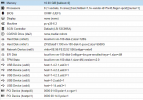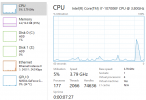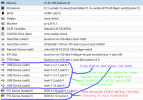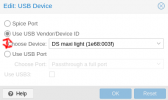Hello.
I've got an instance of VE running 7.2-3 and, amongst other VMs, run a Windows 11 virtual machine as my desktop. I have passed through my GPU and it works to 95%. However, I find that when I run higher-spec games, I suffer with parallel video and audio stuttering. I know my machine can run these without problem as I have an SSD with a Windows OS on to test and there are no issues when not running Proxmox. I use GTA V to test as it's an old game and I can be sure it's not due to a lack of resources. Checking performance stats on the VM and hypervisor show nothing being highly utilised.
My hardware:
The Windows 11 VM:

I've run 'MSI_util_v3' and updated both the audio controller and GPU to use 'msi' with no effect.

I'm not an expert on hypervisors or Linux (I'm a network guy) so I'm not completely sure what other information would be needed to help troubleshoot this, but I greatly appreciate any help you can offer.
I've got an instance of VE running 7.2-3 and, amongst other VMs, run a Windows 11 virtual machine as my desktop. I have passed through my GPU and it works to 95%. However, I find that when I run higher-spec games, I suffer with parallel video and audio stuttering. I know my machine can run these without problem as I have an SSD with a Windows OS on to test and there are no issues when not running Proxmox. I use GTA V to test as it's an old game and I can be sure it's not due to a lack of resources. Checking performance stats on the VM and hypervisor show nothing being highly utilised.
My hardware:
Code:
Intel i7-10700KF @ 3.80GHz, 16 cores
32GB DDR4 Memory
500GB Kingston SSD
4 x 4TB WD Red HDD
NVIDIA GeForce GTX 1050 Ti (GigaByte) - Passed-through GPU
NVIDIA GeFroce GTX 750 Ti (GigaByte) - VE GPU
MSI Z590 PRO WiFiThe Windows 11 VM:

I've run 'MSI_util_v3' and updated both the audio controller and GPU to use 'msi' with no effect.

I'm not an expert on hypervisors or Linux (I'm a network guy) so I'm not completely sure what other information would be needed to help troubleshoot this, but I greatly appreciate any help you can offer.




